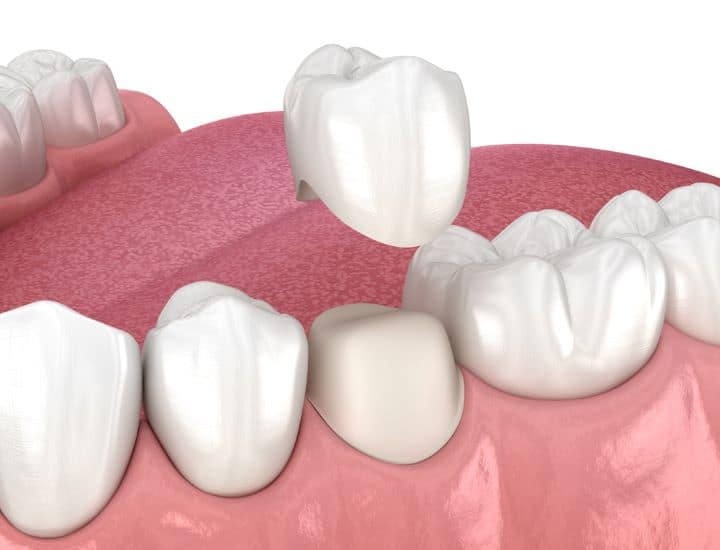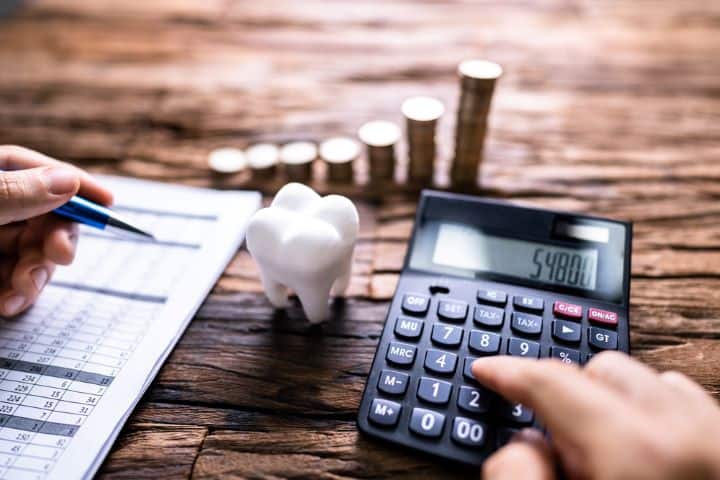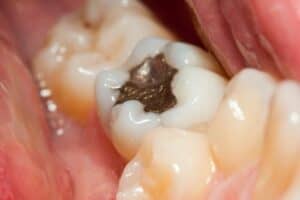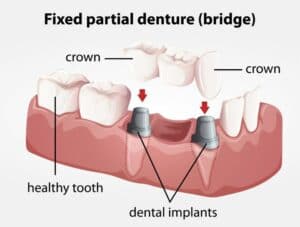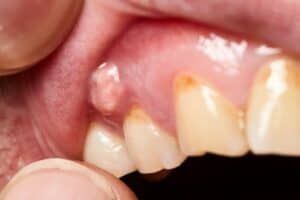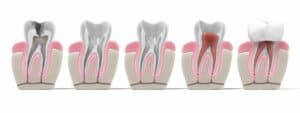Brushing is a habit that we have been taught in our childhood. However, many of our brushing habits aren’t correct.
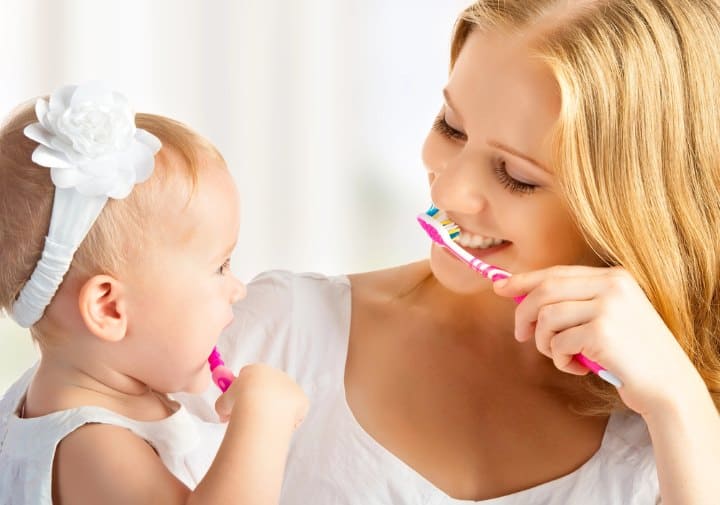
Brushing your teeth twice daily will allow you to maintain your oral health by strengthening your teeth and gums. It removes plaque and calculus that builds up on our teeth and gumline after we eat our meals.
We have a detailed guide ready for you so that you can streamline your brushing habit while learning a few new approaches to removing plaque.
Why is it important to brush your teeth?
Understanding the importance of brushing is critical in deciding whether to be regular with this habit. Your jaws hold white pearls called teeth covered with a pinkish-red carpet called gums.
Your teeth and gums tend to stay healthy if you follow a proper oral hygiene routine and are fond of seeing a dentist regularly except for a few exceptions like:
- You have a genetic predisposition for oral diseases.
- You suffer from a systemic disease like diabetes.
- Your medical condition is compromising your oral health, like uncontrolled diabetes.
Here are the perks of toothbrushing regularly:
- No cavities
- No gum diseases
- No bad breath
When to start brushing your teeth?
Start brushing your child’s teeth as soon as they erupt in the mouth.
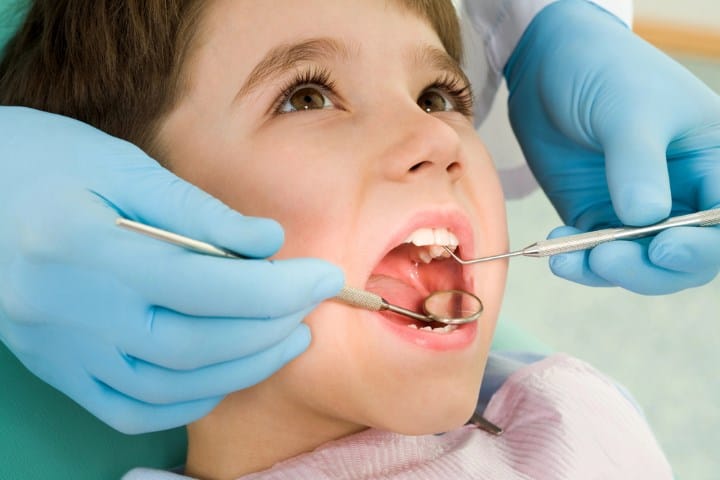
The American Academy of Pediatric Dentistry advises the same, as there’s a risk of tooth decay once the tooth erupts in the oral cavity.
Elderly supervision is necessary as the child’s reflexes aren’t developed at an early age, and they might swallow the toothpaste. It is said that a child’s swallowing reflex matures at six, which means thorough supervision by caregivers is required.
How to brush a child’s teeth?
A pediatric dentist will guide you about how to brush your child’s teeth at an early age. Generally, you must brush your child’s teeth twice a day with a child’s toothbrush.
The toothbrush must have soft bristles with a small head size to clean all the teeth surfaces. It would be best to use rice grain-size fluoridated toothpaste until the child is three years old.
Later, you must allow them to brush with pea-sized toothpaste until they turn six.
How often should an adult brush his teeth?
Most people brush their teeth on average for just 30 seconds once daily, which isn’t enough. It should be two minutes each time, twice daily.
Brushing more than twice daily is okay unless you’re not being vigorous with your brushing technique to protect your teeth and mouth.
I have always asked the counsel patients to use a soft-bristled brush after breakfast and once before bed. Don’t forget to brush your tongue too.
What type of toothpaste is the best?
Over 80% of people have at least one cavity in their mouth by age 34.

For maximal cavity protection, you must find a fluoride toothpaste with at least 1000 parts per million fluoride in it, stamped with ADA approval.
The fluoridated toothpaste tends to restore enamel and make your teeth healthier over some time. This doesn’t mean you’re advised to use higher fluoridated toothpaste, which may lead to a condition called fluorosis.
You must always opt for products with American Dental Association approval and a seal on them. A few essential aspects a toothpaste must have that ADA look into are:
- it must have fluoride
- it must contain active ingredients.
- must not contain flavoring agents
- have been scientifically proven to be safe and effective.
Many times, people look for toothpaste that reduces their sensitivity. Toothpaste with potassium nitrate can work as an effective agent as it desensitizes the nerve endings.
Is it OK to chew gum instead of brushing your teeth?
Nothing can replace brushing your teeth twice daily. Chewing gums can help stimulate saliva, which can wash off the food particles that stick to your teeth. It can help reduce caries. However, it is not a substitute for brushing the teeth.
How to take care of your toothbrush?
A toothbrush harbors several microbes because these live in a toilet.
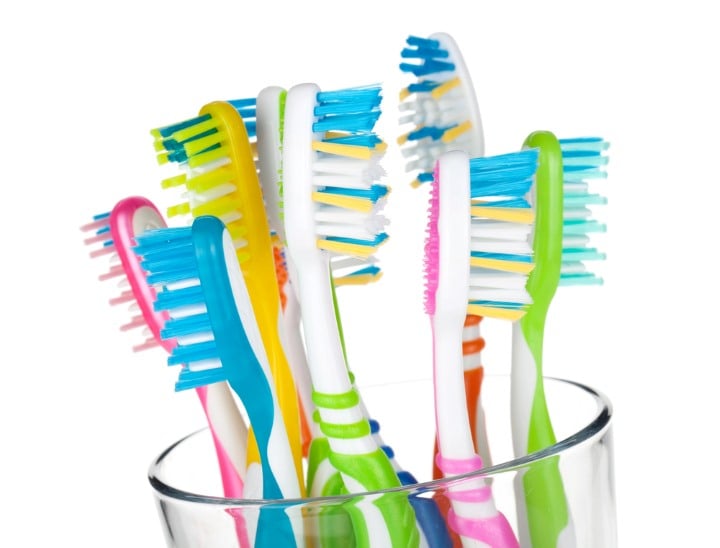
These are known to own oral bacteria along with fecal coliform bacteria that are released in the air when the toilet is flushed. There’s no evidence of eliminating bacteria by soaking it in disinfectants and microwaving it. However, you may take care of it the other ways:
1) Never share your toothbrush with anyone. Contagious diseases are highly transferred with the sharing of toothbrushes and razors.
2) Rinse the toothbrush under tap water to remove the toothpaste and saliva hugging it.
3) Allow the toothbrush to dry before you cap it. The moist toothbrush promotes microbial growth
4) Replace your toothbrush once you feel the bristles have worn. It is advised to change your brush every three to four months.
Manual Toothbrushes Vs. Electric Toothbrushes: Which is better?
Both manual or electric toothbrushes can remove plaque effectively.
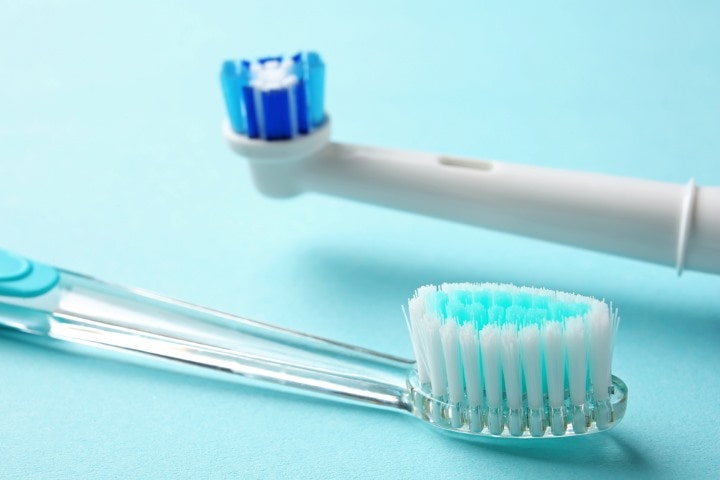
What’s important to realize is that none of them will help you achieve the purpose until you stick to a proper brushing technique. Using electric toothbrushes to implement a brushing technique in your oral cavity is easier.
Electric toothbrushes help improve oral hygiene with effective strokes; however, it doesn’t mean manual toothbrushes are useless.
If you’ve adequate oral hygiene, your dental visits are fair, and you return happily from your dentist, and a professional scaling and root planing treatment doesn’t take a lot of time on your mouth, then manual toothbrushes are good to stick to.
If your dental provider says you’re prone to build plaque in certain areas of your mouth and you tend to lose your oral health, switching to an electric toothbrush is better.
According to the American Dental Association, electric toothbrushes are very powerful and effective in removing plaque and stimulating gingiva, as they can produce thousands of tiny strokes every few seconds.
There are various styles available when it comes to electric brush purchase, including side-to-side, counter oscillation, rotation oscillation, circular, and ultrasonic head movement types.
There are myriad options and styles available in the form of manual toothbrushes, including multi-bristles and angled brushes.
How to brush your teeth the right way? Step-by-Step Guide
Brushing for two minutes twice daily is all that is needed to keep your teeth healthy.
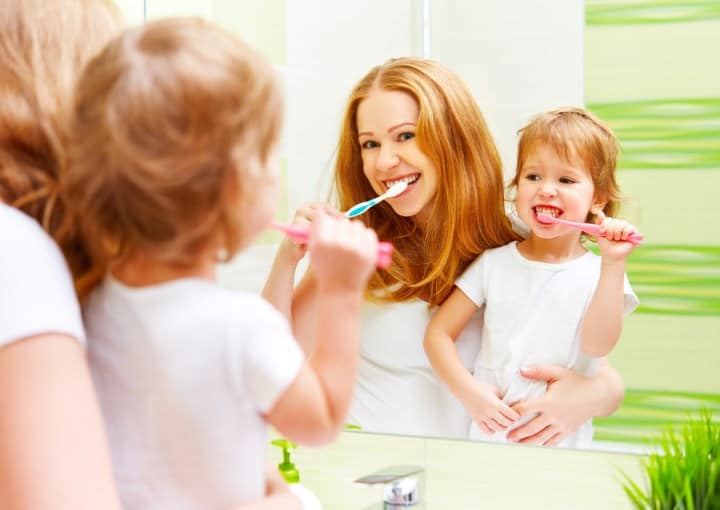
Step # 1 – Use a fluoridated toothpaste
A soft-bristled brush with a small head that is angulated so that it may clean the hidden area of the mouth, too. Use a fluoridated toothpaste of pea-sized or a little more to clean your teeth.
For children aged under 3, you may use a smear-sized amount of toothpaste. According to ADA, your toothpaste must contain at least 1000ppm fluoride. You must check the ingredients before the purchase.
Step # 2 – 45-degree angular placement of your toothbrush
Angulation is essential to remove plaque and food from the sides of the teeth. The 45-degree angle placement also stimulates the gingiva more when compared to the to-and-fro motion of the brush in the mouth.
Step # 3 – Toothbrush every section of the mouth in a gentle motion
Brush gently your front teeth first in the scrubbing motion. Use a circular motion to clean all the areas of the mouth. Use a medium bristle brush and go gentle with the motion; otherwise, you’ll end up hurting your gum tissues.
Step # 4 – Clean quadrant-wise so that you don’t forget to brush any of your teeth
Train your hands to brush your teeth in an orderly manner. This will help you clean all your teeth without having any chances to miss any. Start brushing from the front teeth and then back back. Angle the brush to reach between the spaces between the teeth.
Use circular motion and angular motion one after another to achieve a nice clean when you’re done brushing outer surfaces if your teeth clean the inner surfaces of your teeth. Repeat them for the upper and lower teeth.
Step # 5 – Don’t rinse
Don’t rinse immediately after brushing with fluoridated toothpaste. Just spit. It will allow the fluoride from the toothpaste to be absorbed through the enamel.
Step # 6 – Scrape the Tongue
Cleaning the tongue will scrape the bacteria from it. This allows cellular growth on the tongue and combat bad breath as well.
Step # 7 – Wait a while before using the mouthwash
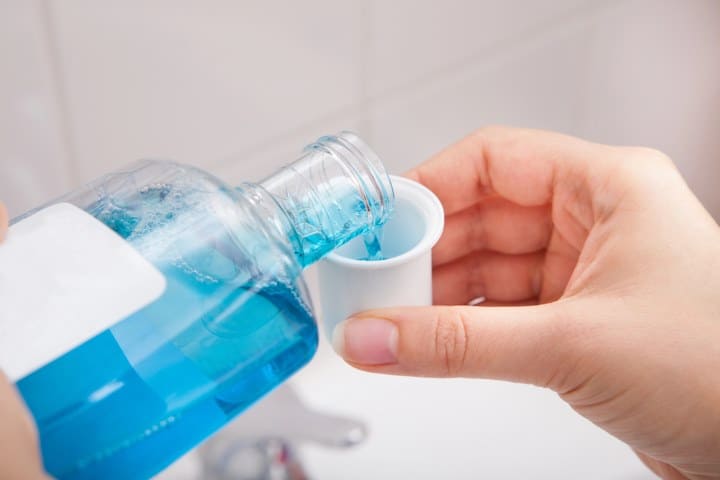
You must wait a while, at least for 5 minutes, before using the mouthwash after brushing. You may use sloss before or after the brushing, whichever suits you the most.
How do we motivate children to brush their teeth?
There can be a lot of ways to make brushing fun for kids.
One such method is plaque-disclosing tablets. Ask your child to chew a tablet and ask them to rinse their mouth.
The pink-stained area will reveal the plaque on the teeth. Ask your child to brush until the pink mark disappears and the natural color of the tooth appears.
What are different brushing techniques?
There are a lot of conventional techniques, more bookish yet effective techniques, that you can use to maintain your oral hygiene.
Bass Technique
One of the best techniques that are commonly used is to remove plaque from beneath the gum line. It is known to reduce the risk for plaque-induced gingivitis that’s commonly seen within the population.
Here are the steps to adopt it:
1) Hold the toothbrush parallel to the teeth.
2) Make a 45-degree angle with the teeth. This allows the brush to sweep away the plaque beneath the gumline when moved up and down.
3) Brush gently while moving the brush back and forth 15-20 times.
4) Brush the teeth from inside and outside.
5) Brush it from the chewing surface as well.
Stillman Technique
This one is similar to Bass Technique except that you use short horizontal strokes instead of circular strokes.
1) Place the brush at an angle to your teeth, which is 45 degrees. The brush surface should face toward the chewing surface of the teeth.
2) Gently brush the inner and outer surfaces of the teeth 15 to 20 times in a back-and-forth motion.
3) Brush all teeth this way.
Charter Technique
This technique is especially advised for individuals with spacing between the teeth, exposed roots, and gum loss. This one is also advised by individuals who have orthodontic devices
1) Place your toothbrush at a 45-degree angle facing towards the chewing surface of the tooth.
2) Vibrate brush for 15 to 20 times.
Some of the ingredients to prevent dental plaque
If you’re continually getting much tartar on your teeth, you must know a few ways to manage it at home without seeking a dentist.
Xylitol
This is a sweetener.
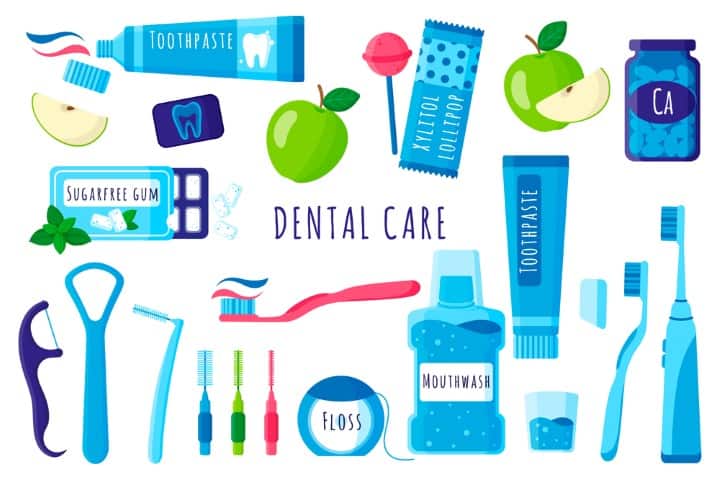
These have antibiofilm properties, which prevent the adhesion to your teeth. Make sure your chewing gum is made up of xylitol to increase salivary flow to your mouth while suppressing the plaque adhesion to your teeth.
Herbs
Rosemary, clove, thyme, garlic, curcumin, and cinnamon can help reduce biofilms
#1 Home Remedy To Get Rid of Dental Plaque
The plaque that grows around your teeth can leach out acids.
The acids can decrease the neutral or near-neutral pH of your mouth to acid. This causes decalcification. If you’re consuming too much sugar, the plaque will release more acids.
This will make an acidic environment, causing calcium to leach out from your teeth and causing cavities. Using baking soda or sodium carbonate can restore the pH of your mouth and can break the biofilms.
It has no side effects. Mix 1/4th teaspoon into half a cup of water. Mix that with hydrogen peroxide 3%, which can inhibit biofilm formation. Use it to have better control of your plaque formation.

